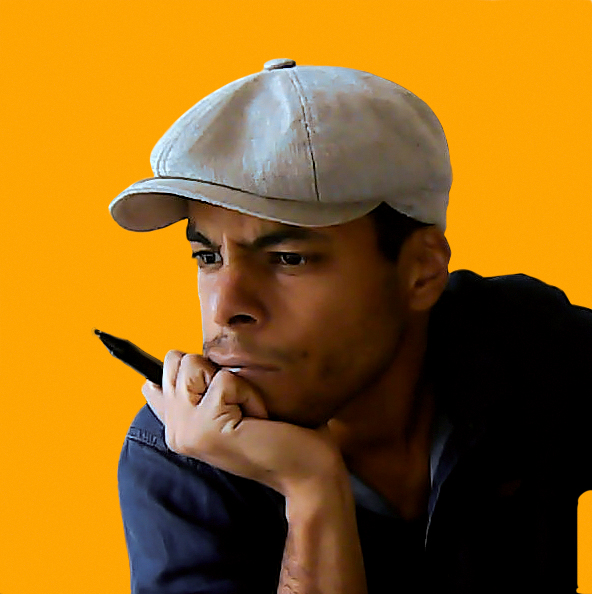As artists we usually have heads full of ideas and we are eager to get them out. It feels there is never enough time in the world. Surely getting a little faster would alleviate some of that angst. Plus, good work that is done fast usually has that decisiveness that comes with it that makes it feel this much more alive. Some of us seem to effortlessly output masterpieces after masterpieces in a fraction of the time it would take us to produce work that wouldn’t even be a tenth as good. How do they do it ?
A road paved with many sketches
Allegedly, Craig Mullins got good at his craft by outputting hundreds or even thousands of quick paintings. No more than half an hour on each. They would feature one or a couple of main goals that he would try to achieve such as lighting or composition, or anatomy. When something was not good enough for his liking, he would start again from scratch rather than trying to edit and better his first try. In that way, he acts in line with John Singer Sargent’s philosophy. The man would always complete his portraits in one process ; never attempting to repaint anything for he held that the construction of a head prepared the place for all its features and if one was wrongly placed, it meant the under-structure was wrong and the whole piece had to be repainted from scratch. “If only one had oneself under perfect control, one could always paint a thing, finally in one sitting.”
As digital painters, that practice can feel alien to us. We were given a magical ctrl+Z shortcut and the ability to repaint the same surface over and over again with no limitation what so ever. We are free to add details without restraint. But speed comes from simplification. As far as learning is concerned, it is better to draw a same subject 20 times for 2 minutes each rather than spend 40 minutes detailing the same image. Abraham Lincoln famously said that if he was given six hours to chop down a tree, he would spend the first four hours sharpening the axe. That time should be spent trying to gain understanding. Details without understanding have a tendency to weaken statements. On the other hand, understanding is what unlocks effortless mastery.
A process of turning understanding into intuition
Please note that this is not about fast execution per say. The hand is not moving any faster when painting fast. In fact it is often moving quite a bit slower. The artist has to ensure it is going to be an accurate add before he puts down the paintbrush on the canvas. He has to channel all of his understanding of perspective, volumes, values, light and colors all at once so that each stroke is as accurate as can be. Analyze before you paint.
Because it is impossible to consciously think about all the grammar rules that go into a painting all at once, most of it those have to come from intuition. That is why it is so hard to train, and that is why it takes so many repetitions to achieve speed. Aim at gaining some understanding with each painting and repeat that process again and again.
In order to implement that sort of attitude, it is going to be downright necessary to stop thinking of each and every piece as precious in and of itself. This is the reason most artists remain so attached to their sketchbooks even in the midst of the digital age. They are a place where they can practice with a full understanding that none of the pages are for the viewer eyes. The goal is to fill the sketchbook and move on to the next one, gathering more and more understanding with each sketch ; not to draw any single amazing picture. A trick is to value the corpus first and foremost.
If you have ever flipped through a sketchbook, you understand that the collection is more than the sum of its parts, there is something special about the way the drawings fill the pages and the way the pages fill the book. Mandala artists understand better than anyone that it is about the practice, not the end results.
The principles are rather similar in music. Improvisation is sometimes described as similar to composition, only faster. Although we can compose music by painstakingly editing a score note by note without any kind of understanding, this is not going to be a good use of our time. Manipulating scales, chords, modes, tones, rhythm and else and doing contained experiments again and again will lead to much better results. With each iteration we get a chance to sit and wonder what went wrong and how to do it better next time ; sharpening our understanding and developing a strong internal logic that would guide us through the vast array of future musical riddles we are about to encounter. By doing the reps, we are also encoding recurring vocabulary in our subconscious where they can be conjured effortlessly. We are building intuition. And soon enough, we will be playing harmonically aware and technically demanding fast runs over difficult chord changes without even blinking twice over it. From understanding, it will turn into instinct.
Freedom is hard-earned
So in a nutshell, to develop speed, we need to focus on volume of work first and prevent ourselves from turning any attempt into sacred cow, we need to do so with intention and ask questions ; we are there to build understanding. There’s no point mindlessly scribbling for hours. Avoid the hypnotic state, be present and aware with each stroke.
Speed ultimately is also called improvisation. It is synonym with freedom and freedom is notoriously hard-earned.

